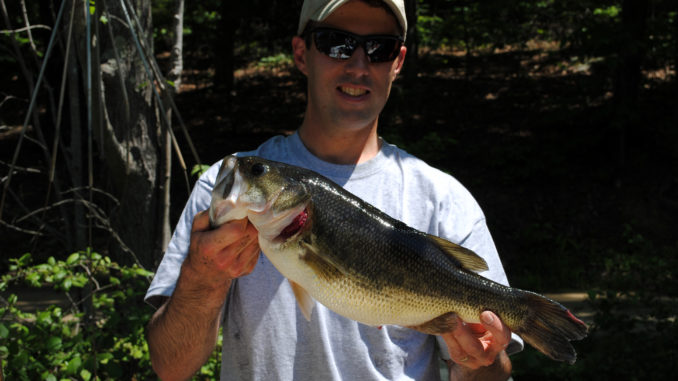
Early morning fishing is best on 20,000-acre reservoir
Largemouth bass currently are in a post-spawn period at Lake Gaston, and according to Lynn Harvell of Topwater Guide service, two distinct fishing patterns have emerged on the 20,000-acre impoundment.
“The striped bass run has tapered off, so a lot of people are fishing for bass now,” Harvell said. “There’s topwater in the early morning, then I fish secondary points after about 9:30 a.m.”
Post-spawn bass are notoriously shy about biting, especially the big females, but Harvell said anglers are finding plenty of action from male bass weighing from 1½ to 4 pounds.
“The topwater bite has been pretty good with buzzbaits, Pop-Rs, Zara Spooks and other topwater lures like Pencil Poppers and prop baits like Devil’s Horses,” the veteran guide said.
Harvell (434-374-8914) said he’s been starting his fishing days just after daylight in Pea Hill Creek, the lake’s largest creek, approximately two miles northwest of Gaston Dam. Pea Hill has a sand bottom that many largemouths prefer, especially for spawning, and plenty of structure to hold post-spawn fish.
“I use bait-casting reels with a fairly high-speed retrieve, a 5.1-to-1 ratio, on a 6-foot medium-action rod and 12-pound Trilene or P-Line,” Harvell said. “You can use spinning rods as well.
“When you get bass exploding on buzzbaits around docks early in the morning, fishing can be a lot of fun.”
When the sun rises, it forces bass a little deeper, Harvell said. That’s when he mainly concentrates on structure near secondary points while working his way toward the main lake.
“I’ll eventually go across the lake and fish back toward the Eaton Ferry Bridge and try creek mouths and secondary points (along the lake’s south side),” he said.
Harvell’s favorite lure for creek mouths and secondary points is a 6-inch Wacky Worm rigged in the middle with a split shot eight inches above the hook to allow it to sink quickly or an 8-inch plastic worm rigged Texas style on a 2/0 worm hook with a 1/8- to ¼-ounce bullet weight.
“I’ll let the Wacky Worm sink, then jig it back to the boat,” Harvell said. “I’ll cast the worm into brush and work it.”
Largemouths will be fairly shallow, from two to 10 feet deep, after the topwater bite subsides, he said.
“I’ll fish anything in the water at that depth from stumps to weed lines to stick-ups, and especially the ends of laydowns near deep water,” he said.



Be the first to comment